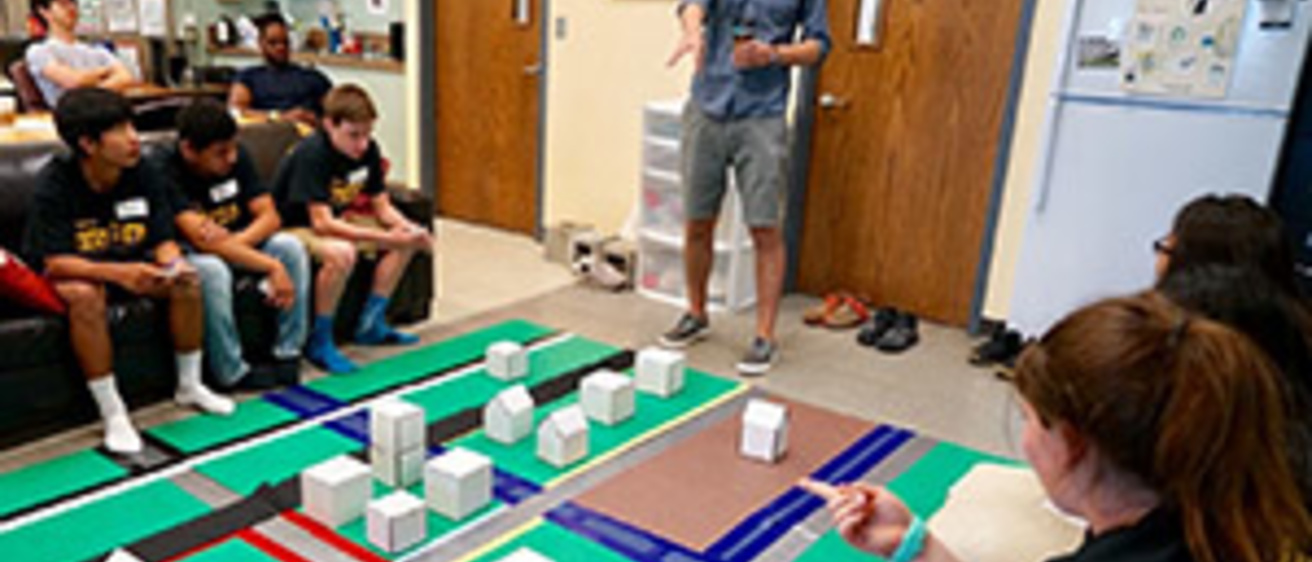As part of a University wide program, eighth grade students from middle schools in Columbus Junction and West Liberty, Iowa recently visited the School of Urban and Regional Planning to learn about planning and health and to undertake a Box City exercise in which they built a small community.
The outreach program is sponsored by Project HOPE (Healthcare Occupations Preparation and Exploration) in the Department of Education and is a STEM-based curricular intervention that integrates academic and vocational opportunities designed to connect minority and low socioeconomic middle school students to the health science professions early in their education.
The session started with a brief slideshow and presentation by Professor and Director, Charles Connerly. The presentation set the stage for thinking about land use planning and its impacts. The students were shown a video of a fertilizer plant explosion in West, Texas and the damage it inflicted on a nearby neighborhood. The students were asked to think of the impacts of land use decisions in West, Texas, and what constitutes a well-planned city.
After the presentation, the Box City exercise began, initially, with only a square representing open space. It contained land, a river, and a railroad. The students were each given different roles such as farmers, residents, and an industrial development organization. First farmers were allowed to place their farms followed by a new highway, houses, a church, businesses, schools, parks, and government buildings. As each layer of the city developed, students had the opportunity to discuss the placement of land uses and weigh the merits of their decisions. As the city became more crowded, the students were challenged to examine the impacts of their past decisions as well as think about how the city will function with the addition of another land use. Finally, the industrial development organization was charged with siting a fertilizer plant. At this point, well-planned cities have a good place for the plant but poorly planned cities do not. The students formed a planning and zoning commission that then decided whether to allow the plant to be located in its proposed location or whether it should be relocated or denied.
Throughout the exercise, Professor Connerly and Kevin Englelbert, a first year graduate student, challenged students to think about land use decisions in their own community. Students were encouraged to think about what makes cities healthy places to live and what impedes cities from being healthy places. Finally, the students were asked to think about how the community they created compares to the communities in which they live and what could be done to make their communities better place to live—especially for people their age.
